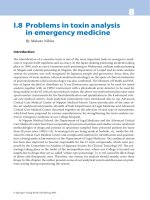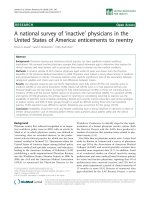Energy Storage in the Emerging Era of Smart Grids Part 8 potx
Bạn đang xem bản rút gọn của tài liệu. Xem và tải ngay bản đầy đủ của tài liệu tại đây (9.06 MB, 30 trang )
Δ
Δ
CH1…
CH4…
MATH…
t
2
T
C
Δ
I
Δn
CH
1
CH
4
A
t
1
MATH
t
3
CH1…
CH4…
MATH…
t
2
Δn
CH
1
CH
4
A
t
1
MATH
t
3
=⋅ = ⋅=
ΔΔ
=⋅=⋅
ΔΔ
Δ
⎛⎞
⎛⎞
⎜⎟
=⋅⋅Δ =⋅⋅ −
⎜⎟
⎜⎟
⎝⎠
⎝⎠
⋅
⋅
==≈
⎛⎞ ⎛⎞
−
−
⎜⎟
⎜⎟
⎝⎠
⎝⎠
t
2
n
1
CH
1
CH
4
A
t
1
MATH
t
3
CH
2
n
2
B
Δ
Δ
μ
Power Electronics for Modern Wind Turbines
Proceedings of the Power
Conversion Conference
Proceedings of the APEC
IEEE Electrical and Computer Engineering,
IEEE Transactions on Power Electronics,
Proceedings of the 4th International Scientific Conference of The Military Technical Collage
(ICEENG)
Advanced DC/DC Converters
Proceedings of the EPE Conference
Proceedings of the the
International Conference on Electrical Machines (ICEM)
IEEE Transactions on Industrial Electronics,
Proceedings of the 5th IET International Conference on Power
Electronics, Machines and Drives (PEMD 2010)
Proceedings of the 5th IET International
Conference on Power Electronics, Machines and Drives (PEMD 2010)
DC-DC Switching Regulator Analysis
Power Electronics, Converters, applications
and Design
EPE Journal,
Proceedings of the IEMDC'03
Proceedings of the
PESC
Electrical Machines, Drives, and Power Systems
10
Bio-Inspired Synthesis of
Electrode Materials for
Lithium Rechargeable Batteries
Kisuk Kang and Sung-Wook Kim
Seoul National University,
Republic of Korea
1. Introduction
Human history has been made through endless challenges, searching for universal truths of
nature. Sometimes, nature becomes a crucial barrier that human beings should overcome,
however, repeatedly, it inspires us to make progress in science and results in a better life.
Nature always provides pointers in developing technologies; emulating nature serves as a
very helpful methodology for such development (Bensaude-Vincent et al., 2002). Figure 1
shows some examples of creations that were invented through the emulation of nature.
Especially, living organisms are excellent teachers whose metabolism, vital activity, and
growth present novel synthetic routes for the formation of organic (or inorganic)
biomaterials (Sanchez et al., 2005). The study of on the biomaterials, highly ordered forms of
molecules in a biological system with complex nanostructures, has opened up a new era for
fabricating nanomaterials through the emulation of biological processes (Dickerson et al.,
2008).
This chapter briefly introduces the bio-inspired synthetic routes of nanostructured electrode
materials for lithium (Li) rechargeable batteries using biomaterials as structural templates.
Various biomaterials have been synthesized both naturally, i.e., inside living bodies (in vivo),
and intentionally in the laboratory (in vitro), (Sanchez et al., 2005; Dickerson et al., 2008).
One can synthesize biomaterials that possess unique nanostructures without much
difficulty. By controlling the synthesis conditions, the nanostructure of biomaterials can be
varied from a simple 0-D structure to complex 3-D structures (Lv et al., 2008). The unique
nanostructures of the biomaterials can be applied to various research fields, including not
only bio-applications but also non-bio-applications such as semiconductors, display devices,
catalysts, and energy conversion/storage devices, by hybridizing them with various
functional materials at the nanoscale (Katz et al., 2004; Su et al., 2008; Li et al., 2009). As the
minimizing of a material’s dimension in a certain shape often provides distinctive material
properties due to a large surface-to-volume ratio, geometry, and/or quantum effects, This
could lead to breakthroughs in overcoming the limitations of conventional bulk materials
(Moriarty, 2001). Thus, the hybridization of nanostructured biomaterials with functional
materials frequently offers improved material properties under simple nanofabrication
principles.
Energy Storage in the Emerging Era of Smart Grids
208
Fig. 1. Photographs of creations inspired by nature: (a) thistles (left) and Velcro
®
hooks and
loops (right), (b) eye of fishes (left) and a fisheye lens (right), (c) kingfisher (left) and bullet
trains (right), and (d) bumble bee (left) and micro air vehicle (right). All images were
obtained from
The (Li) rechargeable battery is the leading candidate for large scale energy storage devices
due to its high specific capacity, high operation voltage, and thus, high energy density
(Tarascon & Armand, 2001). Although the (Li) rechargeable battery has been used most
widely as an energy storage system for small portable devices such as lap-top computers
and mobile phones, its electrochemical performance is not sufficient to power larger scale
energy storage systems such as electric vehicles and load-leveling systems (Kang et al.,
2007). In this respect, investigating nanostructured electrode materials has become essential
because improvements in electrochemical performance, such as higher specific capacity,
higher rate capability, and better cyclability, are expected in this dimension. The nanoscale
dimension offers some advantages to the electrochemical performance because of the large
Bio-Inspired Synthesis of Electrode Materials for Lithium Rechargeable Batteries
209
surface area contacting electrolyte, short (Li) ion diffusion length, and facile strain
accommodation induced by volume change (Bruce et al., 2008).
Various synthetic routes have been investigated extensively to synthesize novel
nanostructured electrode materials. The use of nanostructured templates is one of the most
promising approaches because target nanostructures can be obtained simply from the
structural duplication of the nanostructured templates (Cheng et al., 2008). Biomaterials,
whose varieties of nanostructures are easily obtained by simple control of the synthesis
conditions, are considered useful structural templates for nanofabrication (Cui et al., 2010).
Also, their surface groups can offer possible nucleation sites for the growth of electrode
materials (Ryu et al., 2010a). Nanostructured electrode materials based on biomaterial
templates can show improved electrochemical performance compared with that of bulk
materials, and their fabrication processes are often more environmentally friendly compared
with other methods of preparing nanomaterials.
2. Biomaterials
In living organisms, biomaterials are produced from interpreting the genetic information in
nucleic acids such as deoxyribonucleic acids (DNAs) and ribonucleic acids (RNAs). Genetic
expression produces proteins, cells, tissues, organs, and finally, bodies. One interesting
feature of biomaterials is that they are constructed spontaneously by self-assembly. The
term ‘self-assembly’ refers to the organization of highly ordered nanostructures from
disordered components through spontaneous non-covalent interactions between the
components under specific conditions without any external driving forces (Reches & Gazit,
2006). When specific condition for self-assembly are satisfied, the components, or building
blocks, start to create the nanostructure by themselves, forming various complex
nanoarchitectures. Thus, self-assembly is a useful way to fabricate nanostructured materials.
The self-assembly Phenomenon frequently occurs naturally in biological systems, forming
complex nano-patterned structures (Fraden & Kamien, 2000).
For the past several decades, many research efforts have been focused intensively on the
synthesis of biomaterials in the laboratory and on using them to develop conventional bio-
applications such as tissue regeneration and artificial organs (Geise et al., 2006). Figure 2
illustrates various shapes of self-assembled biomaterials formed naturally and artificially.
They exhibit exclusive structures from nanoscale to macroscale (Brachmann & Cagan, 2003;
Ryu & Park, 2008; Xia et al., 2004).
Recently, it has been widely demonstrated that self-assembled biomaterials can serve as
structural motifs for non-biological nanostructured materials (Sanchez et al., 2005).
Biomaterials are composed of organic materials that contain various functional groups, so
their acidities and polarities at the surface can provide possible adsorption sites for
precursors of the target nanostructured materials. When the adsorbed precursors react
exclusively on the surface to form the target materials, the complex shapes of the
biomaterials are duplicated generating isostructural target materials. Some examples of
duplicated nanomaterials are presented in Figure 3 (Zhou et al., 2007; Zhang et al., 2010).
Nanomaterials can fully or partially cover the surface of the biomaterials, forming
nanoarchitecture similar to that of the template. The duplications of the nanostructure of
the biomaterials offers new possibilities for biomaterials in a broad range of research fields
beyond the conventional bio-applications by enabling the synthesis of various functional
materials in complex forms.
Energy Storage in the Emerging Era of Smart Grids
210
Fig. 2. Photographs of naturally (a-b) and artificially (c-d) self-assembled biomaterials: (a)
shell of nautilus ( (b) hexagonal array of eye of drosophilia
(Brachmann & Cagan, 2003), (c) well-aligned peptide nanowires (Ryu & Park, 2008), and (d)
polyaniline-naphthol blue black nanotubes (Xia et al., 2004).
Fig. 3. Nanomaterials fabricated using biomaterials as structural templates: (a) Str.
theromophilus (left) and ZnO hollow nanospheres fabricated using Str. theromophilus as the
structural template (right) (Zhou et al., 2007) and (b) bacteria-cellulose nanofibers (left) and
Au-bacterial-cellulose nanocomposite (right) (Zhang et al., 2010).
In this respect, the structural control of the biomaterial itself becomes an important
technical issue. Artificially self-assembled biomaterials can display various nanostructures
depending on the self-assembly conditions. Because the self-assembly is derived from the
complicated combination of non-covalent interactions including hydrogen bonds,
electrostatic interactions, hydrophobic interactions, and van der Waals interactions
between the building blocks and environment, the morphology of biomaterials is
significantly affected by the local environment. For example, Figure 4 illustrates a series of
nanostructures of a self-assembled aromatic dipeptide, which were produced by
Bio-Inspired Synthesis of Electrode Materials for Lithium Rechargeable Batteries
211
controlling the dissolving solvents (Han et al., 2008). During the process of dissolving and
cooling diphenylalanine (NH
2
-Phe-Phe-COOH) in H
2
O, CH
3
OH, C
2
H
5
OH, or CH
2
Cl
2,
the
diphenylalanine self-assembled into a nanotube shape in H
2
O (Figure 4(a)), nanoribbon
shape in CH
3
OH and C
2
H
5
OH (Figure 4(b-c)), and a nanoribbon/nanowire shape in
CH
2
Cl
2
(Figure 4(d)). The solvent polarity affects the force balance between the non-
covalent interaction, resulting in various nanostructures obtained with different solvents.
If one can prepare the self-assembled biomaterial with precise control of the specific
nanostructure, from a simple 0-D to a complex 3-D structure, it would be a very attractive
template for the nanostructured functional material. So far, naturally structured
biomaterials have been used frequently as templates, and thus, their structural
duplications have been studied extensively in research fields where nanostructured
materials are required. However, despite the extensive research efforts to control the
morphology of biomaterials, further studies are needed to fabricate self-assembled
biomaterials with specific shapes.
Fig. 4. Morphology of diverse nanostructures of the peptide formed in various solvents: (a)
nanotubes formed in H
2
O, (b) nanoribbons in CH
3
OH, (c) nanoribbons in C
2
H
5
OH, and (d)
nanoribbons and nanowires formed in CH
2
Cl
2
(Han et al., 2008).
3. Bio-inspired synthesis of materials for lithium rechargeable batteries
Recently, researchers have tried to find a way to combine biomaterials as a nano-sized
structural template with a functional material with the hope that the nanoscale dimension
and morphology can improve performance of the material. Among various functional
materials under consideration, materials for energy storage/conversion devices attract
Energy Storage in the Emerging Era of Smart Grids
212
much interest because energy problems, such as exhaust and CO
2
emissions of fossil fuels,
have become severe (Tarascon et al., 2001). Nanostructured electrode materials for Li
rechargeable batteries offer improved electrochemical activity, resulting in enhanced battery
performance. However, the realization of the expected nanostructure, i.e. morphology and
dimension, requires further investigation of the synthetic routes. The bio-inspired synthesis
of nanostructured electrode materials can be a useful approach because surface coating onto
the nanostructure biomaterials produces materials conformally (Sanchez et al, 2005). When
one can control the nanostructure of biomaterials by adjusting the self-assembly conditions,
it is easy to synthesize the nanostructured electrode materials with the intended
morphology and dimension.
The various synthetic routes for the bio-inspired synthesis of nanostructured electrode
materials are described in this section. Potential electrode materials, such as the Co
3
O
4
anode, TiO
2
anode, and amorphous FePO
4
cathode, could be fabricated onto biomaterials by
wet-chemistry or vapor deposition processes. Because the biomaterials generally possess
polarity or various functional groups on the surface, many chemical species such as ions and
molecules can be adsorbed on the surface, reacting into the electrode materials. Organic-
inorganic hybrid materials, ensembles of the organic biomaterial templates and the
inorganic electrode materials, can be adopted as electrode materials. Additionally, removing
the biomaterial template in the hybrid materials leaves hollow-structured materials with
superior electrochemical performances as the electrode.
3.1 Virus-based hybrid electrode materials
Enhanced electrochemical activity in the nanoscale dimension is an important reason for
challenges to apply bio-inspired synthesis to Li rechargeable battery materials, due to its
precise structure controllability. Another reason is the soft, flexible, and self-standing
properties of the biomaterials. Increasing demands for portable, wearable, and stretchable
electronic devices have created a need for flexible batteries, which can only be realized by
using flexible electrode materials. As such, biomaterials are considered as excellent
supporting materials for electrode materials. Biomaterials such as viruses and peptides
are promising templates for the nanostructured electrode materials due to their
capabilities to form unique nanostructures uniformly over a large area. When the
electrode materials precipitate onto the surface of the biomaterials, forming organic-
inorganic hybrid materials, it is expected that the hybrid materials can exhibit
electrochemical activity combined with flexibility.
Viruses are kind of parasitic pathogens inside living organisms that replicate themselves.
Their genetic information is stored in either DNA or RNA. They can replicate only inside the
infected cells of the hosts because they do not have any organs for metabolism and energy
production. Since the first observation of tobacco mosaic virus in 1892, various viruses have
been reported inside all types of living organisms, from small protozoa to large mammals.
Among them, the M13 virus is one of the most frequently investigated viruses for
nanotechnology (Lee et al., 2003). The M13 virus, shown in Figure 5, possesses a wire-like
anisotropic structure approximately 6.5 nm in diameter and 880 nm in length (Nam et al.,
2004). The M13 virus particle is composed of circular single-stranded DNA encapsulated by
a major coat protein (p8) and capped by minor coat proteins (p3, p6, p7, and p9) at the end
of the virus.
Bio-Inspired Synthesis of Electrode Materials for Lithium Rechargeable Batteries
213
Fig. 5. Schematic representation of a genetically modified M13 virus (Nam et al., 2004).
Hybridizing the M13 virus with functional inorganic materials is possible through
modification of the major and/or minor coat proteins because the modified proteins provide
nucleation sites for the inorganic materials. The configuration of the proteins is determined
by the genetic information. Hence, modifying the genetic information in DNA creates
modified proteins and thereby the modified M13 viruses. Figure 6(a) briefly describes the
hybridization process of ZnS-M13 virus with genetic modification. The major coat protein,
p8, is modified to induce the nucleation of ZnS nanoparticles. The configuration of the
protein is determined by considering the compatibility with ZnS nanoparticle growth. In
this case, the A7 (Cys-Asn-Asn-Pro-Met-His-Gln-Asn-Cys) peptide strongly adsorbs Zn
2+
ions. The modified M13 virus is stored in ZnCl
2
solution, and then Na
2
S solution is
introduced to synthesize the ZnS-virus hybrid material. As a result, ZnS nanoparticles cover
the surface of the virus conformally (Figure 6(b-c)).
Fig. 6. (a) Schematic diagram of the hybridization process of ZnS-virus nanowire through
the genetic modification of p7 proteins, (b) STEM images of the synthesized ZnS-virus
nanowire, and (c) EDS mapping of S of the same sample. (Scale bars: 800 nm) (Mao et al.,
2003).
As the M13 viruses are able to bind inorganic materials through the genetic modification,
it is possible to use the modified M13 viruses as biotemplates for the nanostructured
materials used in Li rechargeable battery electrodes. Figure 7 represents the M13 virus
genetically modified to bind amorphous FePO
4
cathode material and highly conductive
carbon nanotubes (CNTs) (Lee et al., 2009). Amorphous FePO
4
is an attractive cathode
material due to its high specific capacity and safety originating from the strong (PO
4
)
3-
covalent bond, but its poor electronic/Li-ionic conduction precludes further investigation
Energy Storage in the Emerging Era of Smart Grids
214
(Okada et al., 2005). Therefore, developing nano-sized amorphous FePO
4
with a highly
conductive agent is essential for the high performance Li rechargeable battery. The
modified M13 virus enables the formation of amorphous FePO
4
nanoparticles at the p8
proteins and, at the same time, combines with the CNT at the p3 proteins as the result of
genetic modification of the p8 and p3 genes.
Fig. 7. Schematic illustration presenting the process of the virus-amorphous FePO
4
-CNT
hybrid material for a high-power Li rechargeable battery: (a) multifunctional M13 virus
obtained through genetic modification and (b) the hybridization process with the modified
M13 virus (Lee et al., 2009).
The hybrid nanowire is synthesized by the following sequence: (i) genetic modification of
the M13 virus to bind amorphous FePO
4
at p8 proteins and CNTs at p3 proteins, (ii) Au
nanoparticle loading onto the virus, (iii) formation of amorphous FePO
4
onto the Au-loaded
virus template to enhance electrical conduction, and finally, (iv) reacting the virus-
amorphous FePO4 nanowires with CNT suspensions with surfactant. Because the modified
p8 proteins contain extra carboxyl acid groups, metallic cations can interact readily with the
virus. The modified p3 proteins have a high affinity for CNTs; thus, the virus-amorphous
FePO
4
nanowire can bind CNTs to form the hybrid nanowire. The synthesized hybrid
material composed of virus template-amorphous FePO
4
electrode materials-CNT conductive
agent is shown in Figure 8 (Lee et al., 2009). The hybrid material possesses a complex
network structure of individual nanowires, which has the same morphology as that of the
virus template without any hybridization process. The diameter of amorphous FePO
4
nanoparticles is approximately 10-20 nm, and that of CNTs is approximately 4-5 nm.
Amorphous FePO
4
and CNTs are well connected each other, as shown Figure 8(e),
indicating that electrons are rapidly supplied to the amorphous FePO
4
cathode through the
CNT networks.
Bio-Inspired Synthesis of Electrode Materials for Lithium Rechargeable Batteries
215
Fig. 8. Nanostructure of synthesized hybrid nanowires: (a) virus-amorphous FePO
4
hybrid
nanowires without CNTs, (b) bare CNTs, and (c-e) virus-amorphous FePO
4
-CNT hybrid
nanowires at different resolutions (Lee et al., 2009).
The simultaneous supply of Li ions and electrons in/outside of active electrode materials is
essential for the operation of the Li rechargeable battery. It is obvious that a faster supply
results in higher performance during operation. The dimension shrinkage of
electrochemically active material, i.e., amorphous FePO
4
, reduces the distance for Li-ion
penetration. The CNT networks continuously supply electrons to the active material. Hence,
superior electrochemical performance is accomplished in the virus-amorphous FePO
4
-CNT
hybrid nanowires, as depicted in Figure 9 (Lee et al., 2009). Figure 9 compares the
electrochemical properties of three types of hybrid nanowires; which are virus-amorphous
FePO
4
hybrid nanowires without CNTs (E4), virus-amorphous FePO
4
-CNT hybrid
nanowires with moderate binding affinity to CNTs (EC#1), and those with strong binding
affinity to CNTs (EC#2). EC#1 and EC#2 display higher specific capacity at every current
rate compared with E4, indicating that the CNT networks sufficiently provide electrons
during the electrochemical reaction. Especially, EC#2 exhibits superb electrochemical
performance. The specific capacity of EC#2 at a current of C/10 (1C = 178 mA g
-1
) is
approximately 170 mAh g
-1
, which is comparable to that of a theoretical one. Its high
capacity is maintained at higher current rates, indicating that the hybrid nanowires are
promising candidates for high-power applications. The specific capacity of EC#2 at 10C is
as high as 130 mAh g
-1
. Additionally, all samples show excellent cycle retention up to 50
cycles, indicating that the hybrid nanowires remain stable upon electrochemical cycling.
Energy Storage in the Emerging Era of Smart Grids
216
Fig. 9. Electrochemical performance of hybrid nanowires based on multifunctional M13
virus templates: (a) discharge profiles of E4 (virus-amorphous FePO
4
nanowires), EC#1
(virus-amorphous FePO
4
-CNT nanowires with moderate affinity for CNTs), and EC#2
(virus-amorphous FePO
4
-CNT nanowires with strong affinity for CNTs) at current rates
from C/10 to 10C, (b) Ragone plots of the hybrid nanowires (inset: Ragone plot of E4 as a
function of carton contents), and (c) capacity depending on the number of cycles at a current
rate of 1C for 50 cycles (Lee et al., 2009).
The same strategy of a modified virus as a structural template could be adoptable for other
kinds of electrode materials. Co
3
O
4
is one of the most promising anode materials for the Li
rechargeable battery due to its high specific capacity (~890 mAh g
-1
) through a conversion
reaction (Kang et al., 2005). Although the Li
2
O phase, a product of the conversion reaction of
Co
3
O
4
, is electrochemically inactive, it becomes electrochemically active when the dimension
of Li
2
O is reduced to nanoscale. Thus, the nanofabrication of Co
3
O
4
, the mother phase of
Li
2
O, is essential for the highly active Co
3
O
4
anode (Li et al., 2008). The genetically modified
M13 virus could define the nanostructure of Co
3
O
4
. Figure 10(a) simply illustrates the
modification of the M13 virus (Nam et al., 2006). The surrounding p8 proteins are modified
to two types: one contains a Co nucleating motif, and the other contains Au binding motif.
The virus-Au-Co
3
O
4
hybrid nanowires are fabricated through an Au-binding followed by
Co
3
O
4
nucleation and growth. Viruses that do not contain the Au binding motif cannot bind
Au nanoparticles at all. Uniform Au nanoparticles (~5 nm in diameter) are finely dispersed
in the hybrid nanowires, as shown in Figure 10(b-c) (Nam et al., 2006). The hybrid
nanowires show excellent electrochemical properties due to the improved electrochemical
activity of the conversion reaction in the nanoscale dimension. The Au-containing
nanowires exhibit better performance, indicating that Au nanoparticles further improve the
electrochemical activity. This is due to the increased electronic conduction, or catalytic effect
Bio-Inspired Synthesis of Electrode Materials for Lithium Rechargeable Batteries
217
of the Au nanoparticles. The increase in the current density at CV measurement shown in
Figure 10(e) indicates that the incorporating of Au nanoparticles increases the reaction rate
of the Co
3
O
4
anode (Nam et al., 2006).
Fig. 10. Nanostructures and electrochemical properties of the virus-Au-Co
3
O
4
hybrid
nanowires: (a) schematic visualization of the modified M13 virus with both a Co-nucleating
motif (blue) and an Au-binding motif (yellow), (b) the virus-Au hybrid nanowire before
Co
3
O
4
growth, (c) the virus-Au-Co
3
O
4
hybrid nanowire, (d) specific capacity depending on
the number of cycles of the hybrid nanowires with and without Au at a current of C/26.5 for
8 cycles, and (e) CV curves of the nanowires with and without Au at a scan rate of 0.3 mV s
-1
(Nam et al., 2006).
Energy Storage in the Emerging Era of Smart Grids
218
Fig. 11. Schematic diagram of the fabrication procedure for a virus based microbattery
electrode (Nam et al., 2008).
When a virus is genetically modified to have high affinity for a certain substrate, the virus
can be assembled with the substrate without difficulty. This enables the growth of the
virus in any place with the expected shapes by surface modification using a thin layer of
the substrate having high affinity to the virus. This means that the virus-based synthesis
could be applied widely in micro/nano-patterned devices. In this respect, microbattery
fabrication with modified virus has been investigated, as illustrated in Figure 11 (Nam et
al., 2008). As the modified M13 virus is known to be easily assembled onto polyelectrolyte
multilayers, a linear-polyethylenimine (LPEI)/polyacrylic acid (PAA) multilayer is
prepared as a solid electrolyte as well as a separator on the patterned
polydimethylsiloxane (PDMS) substrate. The positive LPEI and negative PAA layers
electrostatically combine to form a multilayer film through a layer-by-layer deposition
technique. The modified virus is grown onto the film by dropcasting, and then Co
3
O
4
is
nucleated on the virus template. Figure 12 shows AFM images of the fabricated virus-
Co
3
O
4
anode onto the multilayer film (Nam et al., 2008). The virus tends to form a 2-D
liquid crystalline assembly as a result of the interaction between the viruses and
LPEI/PAA multilayers. Such a 2-D nanostructure confers an advantage upon the
microbattery due to its high packing density. Finally, the virus-Co
3
O
4
anode/multilayer
Bio-Inspired Synthesis of Electrode Materials for Lithium Rechargeable Batteries
219
film structure is transferred to Pt current collectors by a stamping process, and the
electrode is electrochemically characterized, as shown in Figure 13 (Nam et al., 2008). The
electrode can store and release Li-ions reversibly, demonstrating that the virus assembly
represents an adequate process for fabricating microbattery electrodes.
Fig. 12. AFM images of the virus-based microbattery: (a) height image of stacks of the virus-
Co
3
O
4
/(LPEI/PAA) multilayer/PDMS electrode, and phase image of the virus assembly
onto the multilayer (b) before and (c) after the nucleation of Co
3
O
4
(Nam et al., 2008).
Fig. 13. Electrochemical properties of the virus based microbattery electrode: (a) charge-
discharge profiles at a current rate of 26 nA in the voltage range of 0.01-3 V and (b) capacity
depending on current rate, from 26 nA to 255 nA (Nam et al., 2008).
The self-assembled biomaterials are flexible and self-standing, even in the macroscopic
dimension. LPEI/PAA multilayers (just described above) could be fabricated as flexible,
transparent, and self-standing films. When the modified M13 virus is assembled onto the
Energy Storage in the Emerging Era of Smart Grids
220
surface of the film (Figure 14(a-b)), Co
3
O
4
anode material can be grown through the virus
template (Nam et al., 2006). The self-standing film with the anode material can be rolled and
bent without any crack propagations as shown in Figure 14(c) (Nam et al., 2006). Figure
14(d) shows that the virus-Co
3
O
4
anode assembled on the multilayer film exhibits high
specific capacity, even at high current rates (Nam et al., 2006). This result indicates that the
genetic modification of the virus to assemble onto the self-standing polymer film is a
promising strategy for investigating flexible Li rechargeable battery electrodes.
Fig. 14. Self-standing and flexible electrode film based on the virus-Co
3
O
4
nanowires: (a-b)
phase-mode AFM image of the virus-Co
3
O
4
nanowires, (c) photograph of the electrode film
composed of virus-Co
3
O
4
on a LPEI/PAA multilayer with excellent flexibility, and (d)
electrochemical property of the virus-Co
3
O
4
anode at current rates of 1.12C and 5.19C. (Nam
et al., 2006).
The virus, which can be genetically modified to change the proteins to control its affinity for
other materials, provides a promising approach to fabricating the nanostructured electrode
materials for Li rechargeable batteries. The improved affinity offers potential nucleation
sites for not only various electrode materials (e.g., Co
3
O
4
and amorphous FePO
4
) but also
highly conductive materials (e.g., CNT and noble metals such as Au, Ag, and etc). The virus-
based hybrid materials, which contain the electrochemically active nanomaterial with the
conductive agent, exhibit superior electrochemical performance for high-power Li
rechargeable batteries due to the enhanced Li-ionic and electronic conduction. More
interestingly, the genetic modification can control the nanostructures of the virus templates,
as depicted in Figure 15 (Nam et al., 2005; Huang et al., 2004). Although virus assembly to
simple wire-like virus template is well established, further studies should be undertaken to
investigate the control of the shapes of the virus assembly, from simple 0-D to complex 3-D
architectures, and their use as structural templates because the electrode performance could
be strongly influenced by the nanostructure. When genetic technologies to precisely control
Bio-Inspired Synthesis of Electrode Materials for Lithium Rechargeable Batteries
221
the virus assembly and the affinity for the electrode materials are achieved, the barriers
limiting the conventional Li rechargeable battery could be overcome.
Fig. 15. Various nanostructures of modified viruses: (a) ring-shape (Nam et al., 2005) and (b)
Y-shape (Huang et al., 2004).
3.2 Nanotubular electrode materials based on peptide assembly
When a carboxyl group (-COOH) of one amino acid meets an amino group (-NH
2
) of
another amino acid, the functional groups of each molecule can interact to form a covalent
bond (-C(=O)NH-) through a dehydration reaction, as illustrated in Figure 16. This
covalent bond is called a ‘peptide bond’ (Stoker, 2010). The formation of peptide bonds
occurs continuously in living organisms to form proteins. Proteins are biological molecules
composed of one or more polypeptides, which are long chains linked through number of
peptide bonds. Commonly, a peptide is discriminated from a protein in terms of the chain
length, i.e., the number of peptide bonds. When the chains are short enough to be
synthesized in vitro, the molecule is generally called a peptide, but this classification is not
always consistent. Peptides are classified by the number of peptide bonds, such as
dipeptide, tripeptide, tetrapeptide, and so on. The proteins in the genetically modified
viruses possess a high affinity for the electrode materials of Li rechargeable batteries, as
described above. Because peptides and proteins are identical in terms of their component
species, peptides are also able to provide nucleation and growth sites for various
electrode materials. The surface functional groups of the peptides, such as carboxyl
groups, are beneficial for coating the electrode materials onto the peptides.
Fig. 16. Formation of a peptide bond between a carboxyl group and an amino group through
a dehydration reaction.









